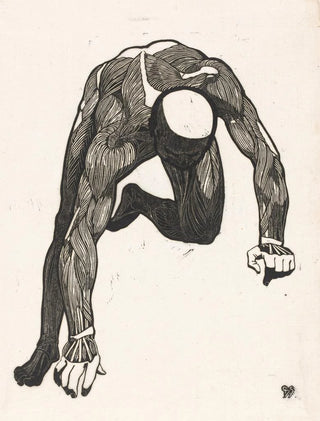Art print | Étude anatomique des muscles du cou, des bras et des jambes d'un homme - Reijer Stolk


View from behind

Frame (optional)
Reproduction Anatomical study of the muscles of the neck, arms, and legs of a man - Reijer Stolk – Captivating introduction
The artwork "Anatomical study of the muscles of the neck, arms, and legs of a man" by Reijer Stolk offers a true window into the artistic and scientific craftsmanship of the 17th century. Through this study, the artist invites us to explore the complexity of the human body while revealing the finesse of his observation. By combining art and anatomy, Stolk manages to transcend simple representations to provide an aesthetic and educational vision. This piece, far more than a mere illustration, awakens an insatiable curiosity within us for the mysteries of the human body and the artistic techniques of the era.
Style and uniqueness of the work
Stolk's work is distinguished by its anatomical accuracy and delicate line work. Every muscle, every joint is rendered with remarkable precision, demonstrating meticulous study and impressive technical mastery. The choice of lines, both fluid and rigorous, gives the composition a particular dynamism, almost alive. Subtle shadows and shades of gray enhance the three-dimensionality of the forms, immersing the viewer in deep contemplation. This representation is not only a scientific study but also a work of art in its own right, where the beauty of the human body is highlighted with palpable respect. Stolk succeeds in balancing scientific accuracy with artistic sensitivity, creating a unique piece that fascinates and educates.
The artist and his influence
Reijer Stolk, a Dutch artist of the 17th century, established himself in the art world through his innovative approach to anatomy. Trained during a period when art and science began to intersect significantly, Stolk was influenced by the great masters of his time while developing a style that is uniquely his own. His works, often dedicated to the study of the human body, reflect a deep respect for science and a passion for aesthetics. By integrating anatomical elements into his creations, he paved the way for future artists and scientists, contributing to the evolution of bodily representation in art. His influence endures, inspiring

Matte finish

View from behind

Frame (optional)
Reproduction Anatomical study of the muscles of the neck, arms, and legs of a man - Reijer Stolk – Captivating introduction
The artwork "Anatomical study of the muscles of the neck, arms, and legs of a man" by Reijer Stolk offers a true window into the artistic and scientific craftsmanship of the 17th century. Through this study, the artist invites us to explore the complexity of the human body while revealing the finesse of his observation. By combining art and anatomy, Stolk manages to transcend simple representations to provide an aesthetic and educational vision. This piece, far more than a mere illustration, awakens an insatiable curiosity within us for the mysteries of the human body and the artistic techniques of the era.
Style and uniqueness of the work
Stolk's work is distinguished by its anatomical accuracy and delicate line work. Every muscle, every joint is rendered with remarkable precision, demonstrating meticulous study and impressive technical mastery. The choice of lines, both fluid and rigorous, gives the composition a particular dynamism, almost alive. Subtle shadows and shades of gray enhance the three-dimensionality of the forms, immersing the viewer in deep contemplation. This representation is not only a scientific study but also a work of art in its own right, where the beauty of the human body is highlighted with palpable respect. Stolk succeeds in balancing scientific accuracy with artistic sensitivity, creating a unique piece that fascinates and educates.
The artist and his influence
Reijer Stolk, a Dutch artist of the 17th century, established himself in the art world through his innovative approach to anatomy. Trained during a period when art and science began to intersect significantly, Stolk was influenced by the great masters of his time while developing a style that is uniquely his own. His works, often dedicated to the study of the human body, reflect a deep respect for science and a passion for aesthetics. By integrating anatomical elements into his creations, he paved the way for future artists and scientists, contributing to the evolution of bodily representation in art. His influence endures, inspiring






